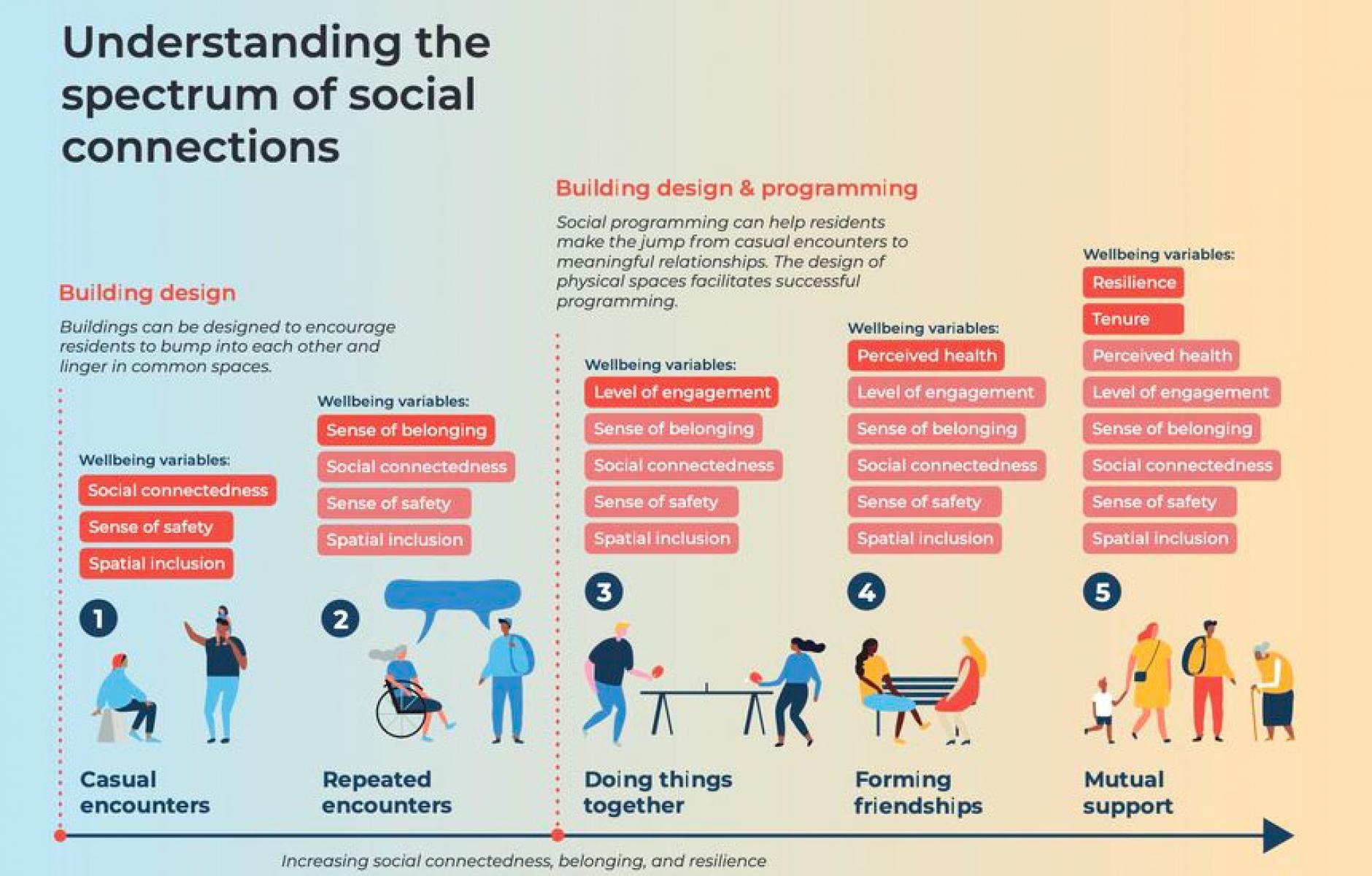
How community design impacts social life
The social aspect of community development is important. It’s been said before, but we are, at heart, social creatures. When technology drives us apart, as it has in many ways over the last 100 years, we suffer.
Social scientists have consistently measured happiness in America since the 1970s, and over that time, we have become unhappier, dramatically and steadily. When you think it can’t get any worse, you read about a widespread recent rise in depression and anxiety. This may be good news in the counseling business but bad news for everyone else (I jest—counselors care even as their services are in high demand).
I find it interesting that this doesn’t get more attention. If the economy goes down, even briefly, this dominates the news every day. Happiness drops for a half-century, and we get the occasional news article. Would you rather be unhappy and filthy rich, or blissfully happy and working class? Granted, it is probably hard to be blissful most of the time and poor. But once the basic needs of my family are met, I rate happiness much higher than economics.
We are happier when we have connections to other people. We used to live in communities with dense, interlocking connections with families, friends, and neighbors. Extended families tended to stay together. We shopped at local stores and knew the proprietors. People went outside more in public places, experiencing the world directly—not through a screen.
I lived through many of these changes, and I don’t want to sound like a curmudgeon; this is just the world we live in. It doesn’t mean that we have to accept it. There are many reasons for unraveling social connections, but how we design communities is part of the problem. We need to understand this better because how we build communities can strengthen social ties, and boost satisfaction. There’s a transportation component: When we walk, we are more likely to have a friendly interaction with another person.
Diana Lind, author of the New Urban Order Substack, describes what she calls a “prosocial” approach to community development: “Prosocial housing policy could mean zoning that enables communities to better foster human connection, whether through accessory dwelling units, building types that offer shared amenities and spaces, or more walkable neighborhoods.”
The last phrase, “walkable neighborhoods,” is key because the issue is more than just housing. It’s how everything comes together, including schools that allow children to walk, where they may experience a friendly encounter along the way. I raised my children in a historic neighborhood, where they walked to three schools, K-12. They met friends each day and had a personal relationship with the crossing guard at the elementary school, who always had a friendly word. When he retired and later died, they mourned.
We need to understand and emphasize the social implications of community design. It shouldn’t be primarily about density, parking, setbacks, and FAR. No one, at the end of their lives, thinks about parking ratios and FAR. But they may wish they had gotten to know more people in their communities.
I don’t know who made the graphic at the top of this article—I found it on LinkedIn with no source—but it is a starting point for understanding the built environment and social ties. My criticism is that it focuses on individual buildings when I think it is more about how buildings relate to one another. It is true, though, that the built environment enables or prevents the little interactions (so-called “weak ties) crucial to a good mental outlook. And community design, coupled with institutions and programming, may help neighbors to form more meaningful relationships over time.




